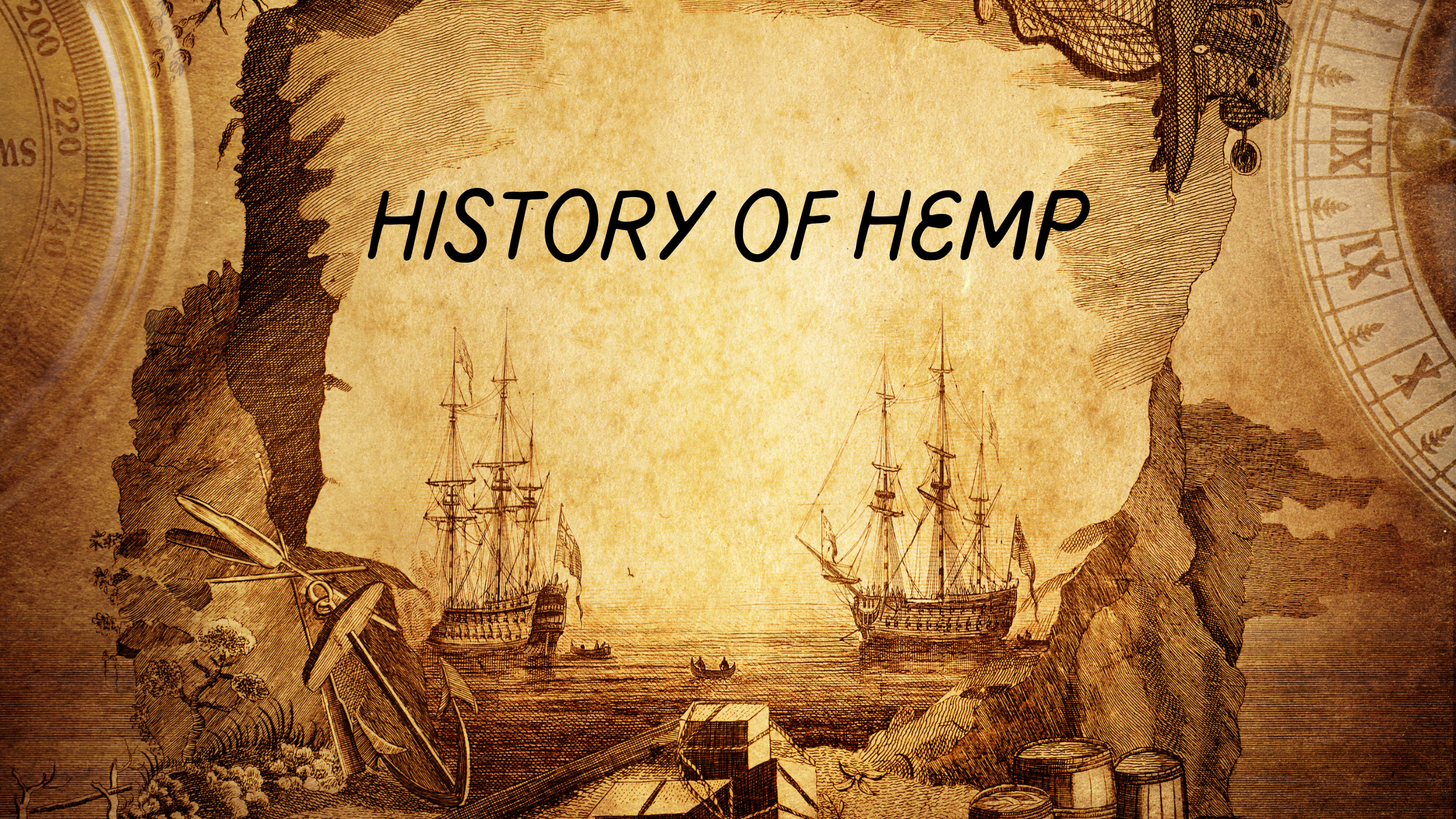
Humans have harvested hemp for centuries. The cannabis Sativa genus is one of the oldest plants people have used for food, medicine and clothing.
So what is the history of the hemp industry? Where’d it come from? Where’s it going? Beyond the benefits of CBD, what is hemp good for?
Pre-Industrial History of Hemp
The history of the hemp industry begins before “industry” was even a word. Hemp was first discovered in Ancient China during the Stone Age, some 10,000 years ago. Primarily grown for its fibre, archaeologists have found hemp fragments near Yangtze and Yellow Rivers.
The Ancient Chinese used hemp for food, textiles, and medicine. Historians argue it was one of the foundational commodities that propelled Ancient China to empire status.
And because of this, hemp would soon spread to Mongolia, India, and Northern Europe.
The Scythian people introduced hemp to Europe around 1500BC. The Scythians were a Eurasian nomadic culture, one of the first nomadic empires of Central Asia.
They used hemp for food and its smoke as a disinfectant. The Scythians also used hemp for recreation and in their burial ceremonies.
Historians think the Scythian culture might have inhaled hemp fumes during their burial rituals.
Like Central Asia, the early cultures of Europe used hemp as food, medicine, and textile, suitable for clothing and rope.
Beginnings of the Hemp Industry
While people have been using hemp for centuries, it’s a little harder to pinpoint where the history of the hemp industry begins.
The word “industry” is associated with industrialization, which didn’t happen until the 1800s. That said, industrialization didn’t occur out of anywhere. This period can be called the history of the proto-hemp industry.
For example, the British navy relied on hemp and flax to provide sails and ropes for their fleet. But hemp wasn’t used only in naval warfare. Sailing ships were also used for international trade, further spreading hemp genetics around the globe.
The English valued hemp so much that in the early 1500s, King Henry VIII demanded landholders in England grow hemp to boost the supply of fibre. At least 25% of their land had to be dedicated to the task, but they could substitute flax for hemp.
In short, hemp was crucial for England’s economy and navy. Also, hemp-derived sails and ropes eventually led to the Americas’ colonization.

History of the Hemp Industry Before Prohibition
What about the history of the hemp industry before prohibition?
Early America grew hemp for rope, clothing, food, paper, and fuels. By the mid-1700s, British North Americans used hemp as legal tender as a substitute for silver coins.
The early drafts of the U.S. Constitution and Declaration of Independence were written on hemp paper, as was much else, since hemp paper was the most common and cheapest. (The founders wrote the final documents on paper made of animal skin).
America’s founders, like George Washington and Thomas Jefferson, were big hemp fans. So what happened?
As the industrial revolution took hold, the many uses of hemp exploded with potential. By 1850, tens of thousands of hemp farms were across the United States. Many of them were over 2,000 acres.
With industrialization, entrepreneurs could produce hemp clothing and paper in mass so even the poorest could afford items that were once exclusive to the upper classes.
Industrial hemp was going to save the planet before we realized the world needed saving. A 1916 USDA report said an acre of hemp could produce four times more paper than a comparable number of trees.
But the real breakthroughs were coming in medicine. Perhaps you’ve seen pictures of old medicine bottles from the 19th century. The list of ingredients almost always includes cannabis/hemp extract.
And why not? Cannabinoid therapy isn’t snake oil but well documented and researched for its efficacy. And doctors knew it back then, too. Sir J. Russell Reynolds, M.D., F.R.S., described hemp as one of the most versatile medicines on earth.
The higher concentrations of THC used in these hemp-derived medicines also meant people smoked for recreational purposes.
In the early 20th century, moral busybodies blamed “cannabis intoxication” for violent crime, psychosis, and immoral behaviour they disapproved of and sought to eliminate.
In short, hemp became synonymous with “marihuana” and was unfairly (and inaccurately) associated with violence, insanity, and racism.
History of the Hemp Industry in Europe
Most of us are familiar with what happened in America regarding the history of the hemp industry.
Hemp became associated with Mexican immigrants and racist laws. Authorities taxed hemp so heavily that most farmers abandoned the crop for financial reasons. By the 1970s, when the American government launched the drug war, hemp was officially prohibited.
But what about Europe? Did Europeans fall victim to the same anti-hemp propaganda as the Americans did?
Unfortunately, most of them did. Lawmakers behind the League of Nations’ 1925 Opium Convention added cannabis extract (and, by extension, hemp) to a list of substances that included opium.
The United Nations replaced the League of Nations after the Second World War. But cannabis misinformation continued with the Single Convention on Narcotic Drugs in 1961.
In addition to misguided laws, synthetic fibres gained popularity after World War 2.
So while countries like France and Russia continued producing industrial hemp, the consumer market shifted to artificial fibres.
History of the Hemp Industry in the 21st century
What will the future of the hemp industry hold? While hemp was popular in the past for its fibres, today, it is often sought out for its cannabinoid content, specifically CBD.
Since researchers have linked CBD to reduced anxiety and inflammation, among other uses, the popularity of hemp has been steadily growing.
This popularity got a shot in the arm when the United States reversed a decades-long ban on hemp with the 2018 Farm Bill.
Further legalization efforts in both America and European countries have only helped undo the damage of the 20th-century drug war.
With Germany beginning to legalize recreational cannabis, the long-term consequences could see industrial hemp return to our manufacturing processes.
Especially as consumers become more aware of the negative environmental impacts of petroleum and cotton-derived products.
But right now, it looks as if the future of the hemp industry is in CBD-based medicine.
Fortunately, we’re just at the beginning of a hemp industry resurgence. What will the history of the hemp industry look like in the 22nd century?





